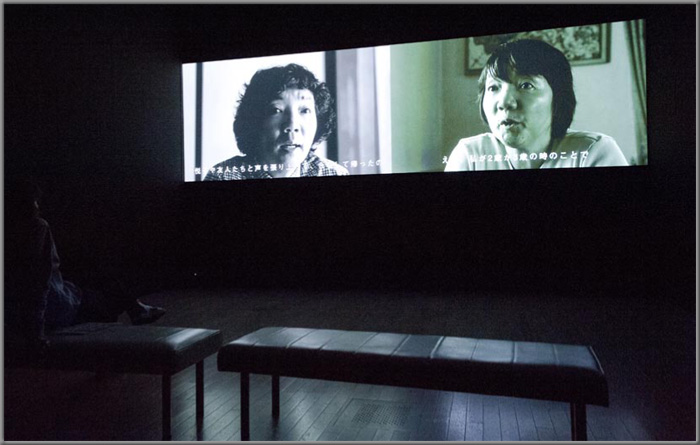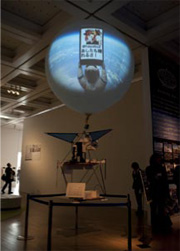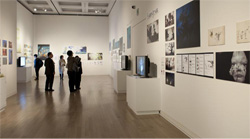Home > Highlighting JAPAN > Highlighting Japan APRIL 2012 > Japan Media Arts Festival: The Great Exhibition
Highlighting JAPAN
TOPICS

Caption: Que Voz Feio (Plain Voices) by Yoshihiro Yamamoto
Credit: MASATOSHI SAKAMOTO
Japan Media Arts Festival: The Great Exhibition
From February 22 to March 4 this year, the National Art Center, Tokyo hosted an exhibition featuring award-winning works from the 15th Japan Media Arts Festival. The Japan Journal's Osamu Sawaji reports.

Video of the smartphone-in-space project projected on a replica of the balloon used for the project
Credit: MASATOSHI SAKAMOTO
The Festival received more entries than ever before this year, with 2,714 works of art submitted from fifty-seven different countries and regions. The main exhibition of award-winning works was held at the National Art Center, Tokyo and featured around 150 of these entries, including the winning entries in each division. The event also included symposiums, presentations and workshops with award-winning artists and some of the judges.
The Grand Prize in the Art Division went to a film called Que Voz Feio (Plain Voices) by Yoshihiro Yamamoto. The film features Japanese-Brazilian twin sisters living in Japan, who recount the childhood incident that left them with their "plain voices." Their accounts are shown simultaneously on two screens next to each other. While listening to their descriptions of the same incident, the viewer gradually becomes aware of subtle differences between the two. Explaining their reasons for the award, the judges praised Yamamoto's work thus: "Rather than reflect reality, memory grows more ambiguous with the passage of time. This film incorporates many layers of difference: the admissions of the twins, the spoken word and written text, native language and translation. Are we capable of sharing an understanding of the past? Quietly smoking out both the potential and the impossibility, this work's delicate and intellectual approach is striking."

The exhibition at the National Art Center, Tokyo showcasing award-winning works of art from the 15th Japan Media Arts Festival
Credit: MASATOSHI SAKAMOTO
"There are so many people who dreamed about going into space when they were young. We came up with the idea for this project because we wanted to bring people together via a smartphone and then launch that phone into space, so we could all share in the experience," explains Takeshi Nozoe from Hakuhodo, one of the members of the team behind the project. "When the altimeter started to have problems during the flight, we received loads of messages of support, cheering us on."
The Grand Prize in the Animation Division went to Puella Magi Madoka Magica, an animated TV series about the trials and tribulations of a "magical girl" and a junior high school student. The Grand Prize in the Manga Division meanwhile went to Hisae Iwaoka's Saturn Apartments, which is set in the near future after the entire planet has been designated a nature reserve, forcing people to live in buildings 35,000 meters above the ground.
© 2009 Cabinet Office, Government of Japan






